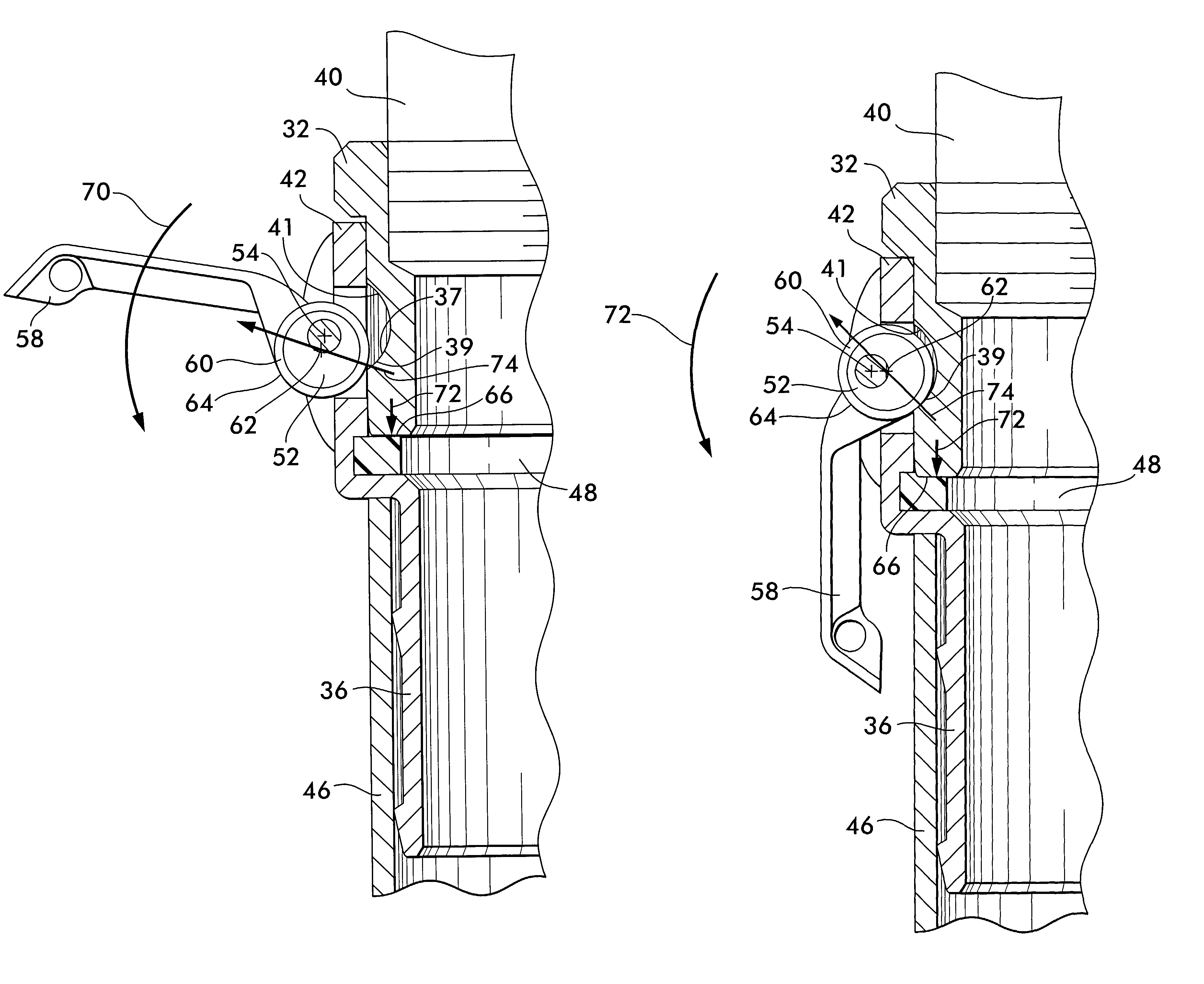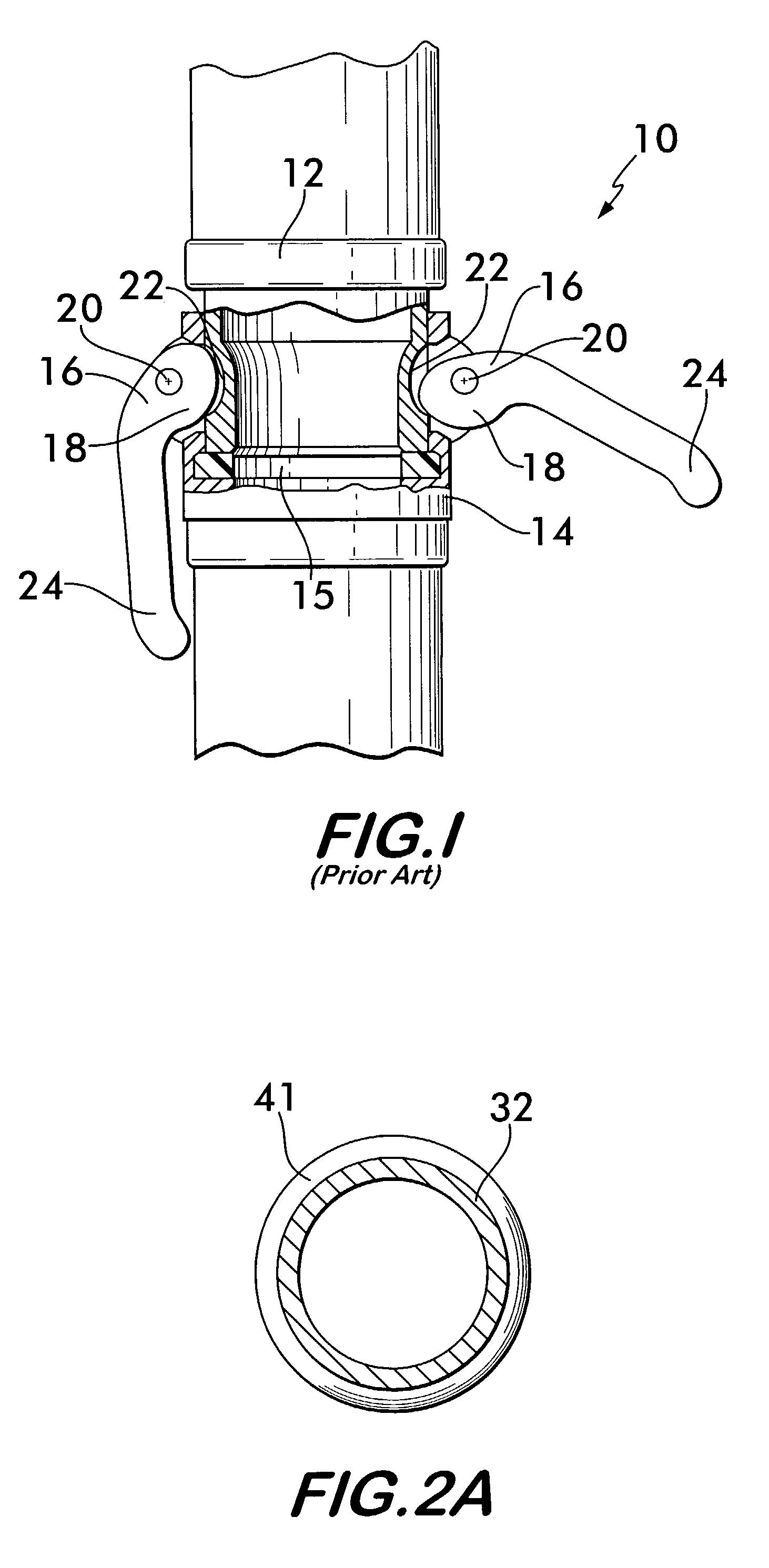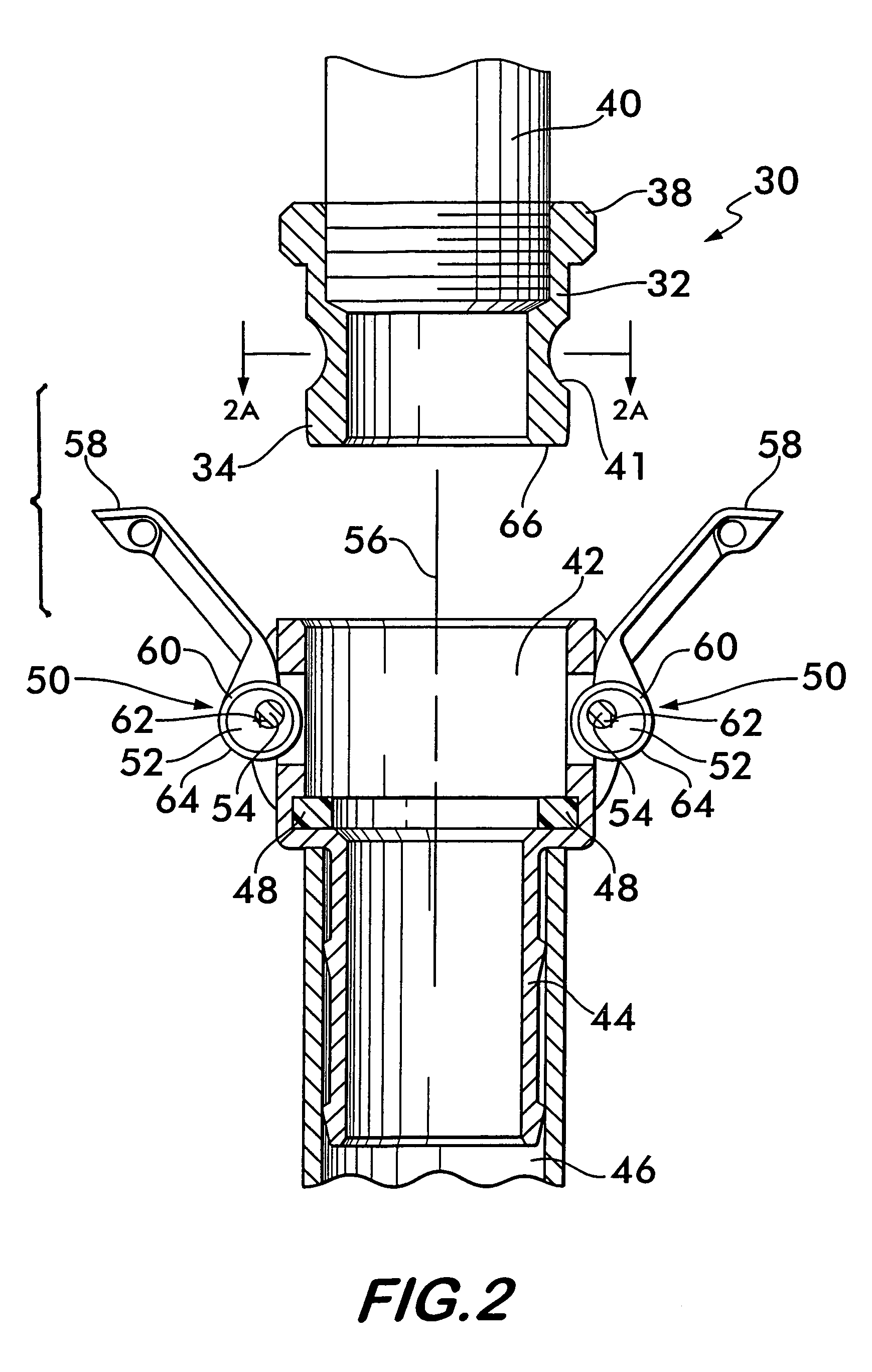Self-locking roller cam for hose and pipe coupling
a cam body and roller cam technology, applied in the direction of couplings, pipe elements, mechanical equipment, etc., can solve the problems of significant frictional force the degree of interference required between the cam body and the concave surface, and the relative high actuation force required to rotate the cam body. , to achieve the effect of reducing friction and actuation force of the cam body and reducing wear between components
- Summary
- Abstract
- Description
- Claims
- Application Information
AI Technical Summary
Benefits of technology
Problems solved by technology
Method used
Image
Examples
Embodiment Construction
[0024]FIG. 2 shows a pipe coupling 30 according to the invention. Pipe coupling 30 includes a male fitting 32 having an end 34 adapted to engage a female fitting 36 and an opposite end 38 attachable to a conduit, for example a pipe or hose end 40. Male fitting 32 is preferably substantially cylindrical in shape and has a concave surface 41 positioned in spaced relation to end 34. Concave surface 41 faces radially outwardly and preferably extends circumferentially around the fitting as shown in FIG. 2A.
[0025]Female fitting 36 has a receptacle 42 at one end adapted to receive the male fitting 32. The other end 44 of the female fitting 36 is adapted to attach to another conduit, such as pipe or hose end 46. Preferably, a seal 48 is positioned within receptacle 42, the seal engaging both the male and female fittings to ensure a fluid-tight joint. Seal 48 is preferably formed from a flexible, resilient material such as an elastomer. Male and female fittings 32 and 36 are preferably machi...
PUM
 Login to View More
Login to View More Abstract
Description
Claims
Application Information
 Login to View More
Login to View More - R&D
- Intellectual Property
- Life Sciences
- Materials
- Tech Scout
- Unparalleled Data Quality
- Higher Quality Content
- 60% Fewer Hallucinations
Browse by: Latest US Patents, China's latest patents, Technical Efficacy Thesaurus, Application Domain, Technology Topic, Popular Technical Reports.
© 2025 PatSnap. All rights reserved.Legal|Privacy policy|Modern Slavery Act Transparency Statement|Sitemap|About US| Contact US: help@patsnap.com



